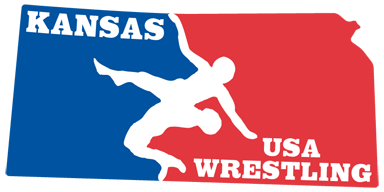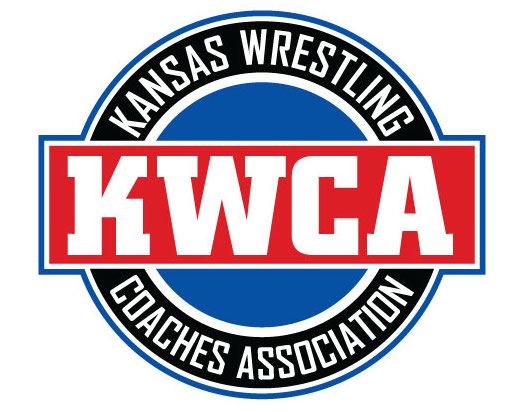Source: Mark Palmer, InterMat Senior Writer
What is current condition of NCAA wrestling?
Mark Palmer
Mark Palmer, InterMat Senior Writer
6/20/2017
mark@intermatwrestle.com, Twitter: @MatWriter
The 2017 NCAA Division I finals drew 17,500 fans in St. Louis (Photo/Tony Rotundo, WrestlersAreWarriors.com)
What is the condition of NCAA wrestling these days?
When it comes to the number of individuals and teams participating in all three divisions of NCAA wrestling, there's good news and there's bad news, with growing numbers of teams and individuals in some divisions ... with others have experienced an overall decline in participation levels over time.
For the most part, NCAA Division II and III wrestling has seen growth in the number of wrestlers and teams since 2000 ... while there now fewer wrestling programs and wrestlers in NCAA Division I over the same time period, according to statistics from the NCAA.
NCAA Division I-III individual participation ... by the numbers
As of the 2015-16 season, there are a total of 7,075 wrestlers in all three NCAA Divisions -- I, II, and III.
Overall, there are 835 more NCAA college wrestlers now than there were during the 2000-01 season. However, all that growth has been in NCAA Division II and III.
In terms of individual participation, NCAA Division II has seen the greatest growth, with 769 more D2 wrestlers competing in the 2015-16 season than in 2000-01. At the beginning of this century, there were 1,177 Division II wrestlers; last season, that number had increased to 1,946. That translates to a 60 percent increase in number of D2 wrestlers since 2000.
NCAA Division III has also seen overall growth in the number of individual wrestlers over the past 16 seasons. In 2000, there were 2,309 wrestlers competing at Division III programs; in 2016, there are now 2,628 ... an increase of 319, or roughly a 12 percent growth rate.
By contrast, NCAA Division I has seen a decline in the number of individual participants since 2000. At the beginning of the century, there were 2,754 Division I wrestlers, according to the NCAA; now there are 2,501 ... or, 253 fewer D1 wrestlers. That's a nine percent drop in terms of the total number of NCAA Division I wrestlers since 2000.
One of the most surprising statistics to come out of the NCAA: there are now more wrestlers in NCAA Division III than in Division I ... 127 to be exact, as of the 2015-16 season (2,628 in Division III; 2,501 in D1). As recently as the 2010-11 season, there were more D1 wrestlers than D3 wrestlers ... but in the past few years, that situation has been reversed, and Division III participation has grown to exceed that of Division I.
One additional aspect of individual participation levels in NCAA wrestling worth noting: college wrestling is a diverse, inclusive sport. Of the 7,075 wrestlers in Division I, II and III wrestling in 2016, nearly a quarter -- or 1,800 -- identify themselves as being from minority groups, including 573 blacks, 504 Hispanics/Latinos, and 245 whose heritage is from two or more races.
Team/program statistics for NCAA Division I-III wrestling
Approximately 20 percent of the 1,119 colleges that are NCAA members have intercollegiate wrestling. In all three divisions of NCAA, there are approximately the same number of wrestling programs now (232) as there were back in 2000 (235). However, NCAA Division II is the only division to claim more wrestling programs today than they did 16 years ago.
There are now 60 Division II wrestling programs, compared to 41 teams in D2 in 2000. According to NCAA statistics, 18.6 percent of Division II schools now have intercollegiate wrestling programs; in contrast, 13.9 percent of D2 members offered wrestling in 2000.
Division I has suffered a loss of wrestling programs in recent years, dropping from 90 in 2000 down to 76 as of 2016. The percentage of D1 schools offering intercollegiate wrestling has also dropped, from 28 percent in 2000, down to 22 percent for last season.
Surprisingly, Division III -- which has seen an increase in the number of individual wrestlers from 2000-2016 -- has seen a decrease in the number of wrestling programs, falling from 104 teams sixteen years ago, down to 96 last season. The percentage of D3 schools offering intercollegiate wrestling has also dropped, from 24.6 percent in 2000 down to 21.3 percent in 2016.
What about squad size?
The changing numbers of individual and team participation in all three NCAA divisions have had an impact on the number of wrestlers at individual member schools.
In NCAA Division I, there are now an average of 32.9 wrestlers per squad, compared to 30.6 wrestlers per team in 2000-01. Divisions II and III have seen even greater increases in the average numbers of wrestlers at member schools. For Division II, the average squad size has increased from 28.7 wrestlers to 32.4 in the past 16 years ... while, for Division III, squad size has grown from 22.2 to 27.4.
When looking at all three NCAA divisions, squad size has jumped from 26.6 in 2000 to 30.5 in 2016.
Big-picture implications
What do these participation numbers for all three divisions of NCAA wrestling say about the future of the sport at the college level?
Based on this information alone, it would appear that the growth of NCAA wrestling may well center upon Division II and Division III programs. In the past year, much has been made of the announced return of Division I wrestling at Fresno State, a program that had been eliminated in 2008 because of overall budget cuts but will return to the mats this fall. However, one of the dominant news stories of 2017 is the elimination of the Division I wrestling program at Boise State, effective immediately.
In a year-in-review feature back in January, InterMat reported that it had covered the news of the addition of 16 new (or resurrected) college wrestling rooms in 2016 (realizing that we may have missed an announcement or two). Of these, fully two-thirds of the new/revived programs were NOT at NCAA schools. A handful of these new programs will be at NAIA (National Association of Intercollegiate Athletics) schools ... while a similar number will be at NJCAA (National Junior College Athletic Association) member schools, most of them being two-year community colleges.
In other words, NCAA wrestling is not necessarily where most growth is taking place in terms of greater numbers of individual wrestlers and programs at the collegiate level.
What happened in 2016 regarding new college wrestling programs is not a new phenomenon. It appears that in recent years, the majority of new mat programs are launched at public community colleges, or private four-year schools. In other words, not at four-year public universities which in the past had their athletics programs in NCAA Division I.
Each college that has announced it was starting a new intercollegiate wrestling program has its own reasons for doing so. However, in the past five or ten years, there are a couple reasons that are often mentioned in the athletic department press releases unveiling a new mat program. One is to take advantage of high wrestling participation already in place in area high schools. Another: to help differentiate that particular college from other similar schools in the area by offering a sport not available at those other schools. (This has been the case in regions of the country which have fewer college wrestling programs, such as the South.) Both of these reasons for adding wrestling can be considered recruiting tools -- potential reasons to attract potential students to a particular college over others. For some would-be students, all other things being equal, they will choose to attend the college with the intercollegiate wrestling program.
Comments
Login or Register to post a comment
Coltguy (1) 2 days ago
Hey Mr. Palmer.
I enjoy your fact based and informative read on the great sport of wrestling. I also appreciate your ability to keep your political views unknown to your readers, unlike Foley. Guy drives me nuts. Wish he would just stick to wrestling..
Your article: I grew up in the wonderful state of Iowa and at 52 years old I have been following folkstyle wrestling for 42 years. But I will follow it no longer. And the reason I will no longer follow it is for the same reason I can't get a non wrestling fan to attend an event. Riding your appointment. As I have mentioned in past posts, it is my opinion riding an apponent is the kiss of death to the potential fan base of high school and collegiate wrestling.
So my 3 questions. When determing the state of wrestling is the fan base of college wrestling a factor?
Do you think eliminating riding time and thus creating more offense would help to increase the fan base of the sport.
And last do you think that change will ever be made?
Coltguy (1) 2 days ago
Hey Mr. Palmer.
I enjoy your fact based and informative read on the great sport of wrestling. I also appreciate your ability to keep your political views unknown to your readers, unlike Foley. Guy drives me nuts. Wish he would just stick to wrestling..
Your article: I grew up in the wonderful state of Iowa and at 52 years old I have been following folkstyle wrestling for 42 years. But I will follow it no longer. And the reason I will no longer follow it is for the same reason I can't get a non wrestling fan to attend an event. Riding your appointment. As I have mentioned in past posts, it is my opinion riding an apponent is the kiss of death to the potential fan base of high school and collegiate wrestling.
So my 3 questions. When determing the state of wrestling is the fan base of college wrestling a factor?
Do you think eliminating riding time and thus creating more offense would help to increase the fan base of the sport.
And last do you think that change will ever be made?
eaglestravis (1) 2 days ago
What happened between the 2000-01 and 2001-02 seasons? All of the decrease in the number of Division I wrestlers took place in the first year of the data. If that first year outlier was removed, there really is no change in the number of DI participants since 2002. The argument that DI participation has dropped in the last 15 years really doesn't work.







